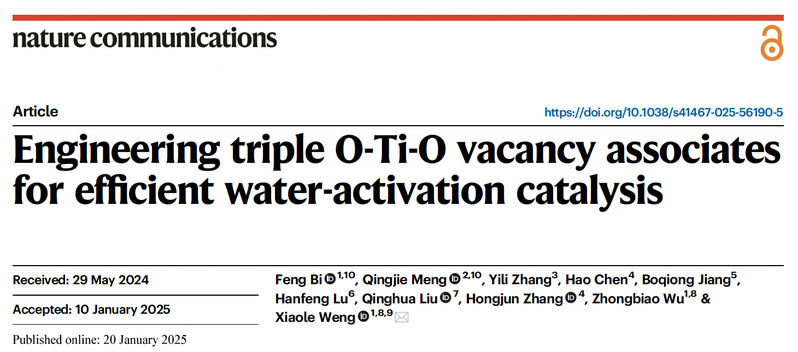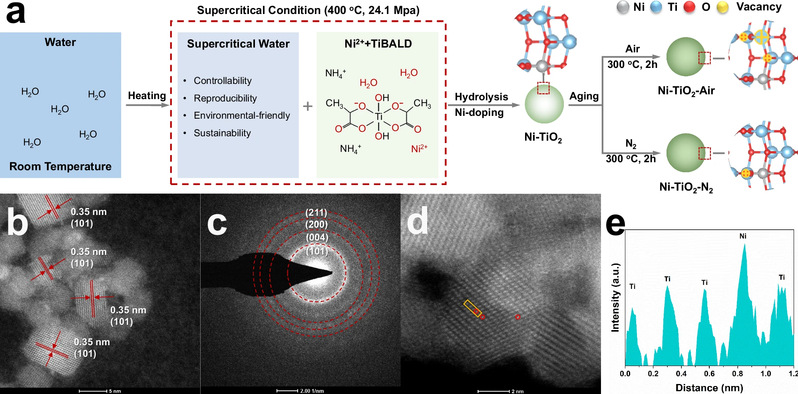Prof. Weng Xiaole’s team published an article in Nature Communications exploring the effective regulation of surface defect structures and their impact on water molecule activation
2025-02-26

First authors: Bi Feng (Zhejiang University)& Meng Qingjie (Ningbo University)
Corresponding Author: Professor Weng Xiaole (Zhejiang University)
Affiliation: College of Environmental and Resource Sciences, Zhejiang University
Link: https://www.nature.com/articles/s41467-025-56190-5
Abstract:
Defect engineering can create various vacancy configurations in catalysts by finely tuning the local electronic and geometric structures of the active sites. However, achieving precise control and identification of these defects remains a significant challenge, and the origin of vacancy configurations in catalysts, especially clustered or associated ones, remains largely unknown. Herein, we successfully achieve the controllable fabrication and quantitative identification of triple O-Ti-O vacancy associate (VOVTiVO) in nanosized Ni-doped TiO2. Experimental and theoretical analyses demonstrate that terminal hydroxyls adsorbed at unsaturated cationic sites play an essential role in boosting VOVTiVO formation, which enhances H2O dissociation and facilitates dissociative OH* deprotonation for defect site regeneration. In contrast, a single VO can be easily saturated by dissociative bridging hydroxyl accumulation, leading to a gradual decrease in the number of active sites. The essential role of VOVTiVO in the Ni-doped TiO2 is evidenced by its comparable catalytic performance in the hydrogen evolution reaction and hydrodechlorination reactions. Our work highlights the importance of engineering vacancy-associated active sites and presents a notable approach for designing highly active and selective catalysts for efficient H2O-involved reactions.

Schematic illustration and morphology characterization of catalysts
